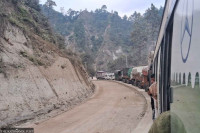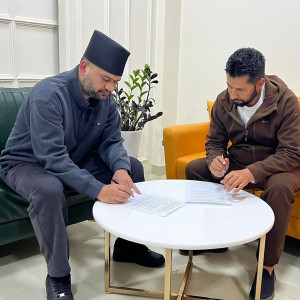Editorial
Travesty of eminence
The prime ministers of Nepal and India should have the courtesy to jointly receive the EPG report.
Perhaps “Waiting for Godot” sounds too cliched a phrase to represent the desperate wait for an official release—acceptance, rather—of the report prepared by the Eminent Persons Group formed to review Nepal-India bilateral relations and recommend a way forward. But literary enthusiasts would concede that the wait has been nothing short of a wait for a favourite author’s novel—say, Vikram Seth’s A Suitable Girl, which never seems to see the light of the day since it was announced in 2009. Well, the A Suitable Boy author can be excused for having a prolonged “writer’s block”, leaving his readers waiting. But what has stopped New Delhi’s “South Block” from accepting and making public the EPG report? After all, the four eminent persons it employed to write the report, apart from the equinumerous eminent persons from Nepal, did not toil for the report to be ultimately hidden away as if it were an unwanted child.
When it finally gets released, chances are that it will have nothing extraordinary. At most, it reiterates what has been a matter of debate from people’s drawing rooms to street corners to diplomatic corridors: The 1950 Peace and Friendship Treaty should be revised, if not scrapped together. In fact, this bit has already made sporadic public appearances, primarily in Nepali media, with one eminent person or another from the Nepali side seeming to find it too difficult to keep the secrets any more. The Indian side of the EPG has made public its displeasure with the leakage. Could it also be that the Babus in New Delhi’s Raisina Hill are unhappy about the content of the report itself? The way the report has been lingering in the shelves for five years points to Indian Prime Minister Narendra Modi’s reluctance to accept its findings. There is no other way the imbroglio can be persuasively interpreted unless the Indian side offers one.
What makes the whole fiasco conspicuous is that no party is legally, even morally, bound to implement the recommendations therein. And this includes what is possibly the most prominent bone of contention between India and Nepal for decades: The 1950 treaty. Having been the so-called bigger beneficiary of the treaty, India would not want to cede the privileges it is already enjoying. But such pettiness does not make India the “Viswaguru” that it aims to become, as allegedly envisioned by Prime Minister Narendra Modi. A real test of India’s commitment to its “neighbourhood first” policy would be its ability to maintain an equal, respectful relationship with its neighbours. That, though, is not on the cards as India shows little interest in receiving—forget implementing—the report jointly produced by ‘eminent’ persons from the two countries.
As Prime Minister Pushpa Kamal Dahal gears up for his desperately awaited official visit to India, he is expected to raise this issue strongly one last time. There is no reason why two friendly neighbours should remain sulky about a report whose recommendations are not even mandatory. Rather than let the report be a secret source of conspiracy theories and disinformation, the two heads of government should accept it together and decide what to do with it. That would be the best way to “take Nepal-India relations to a newer height”, as they are invariably going to claim in their post-visit press meets.




 5.14°C Kathmandu
5.14°C Kathmandu














